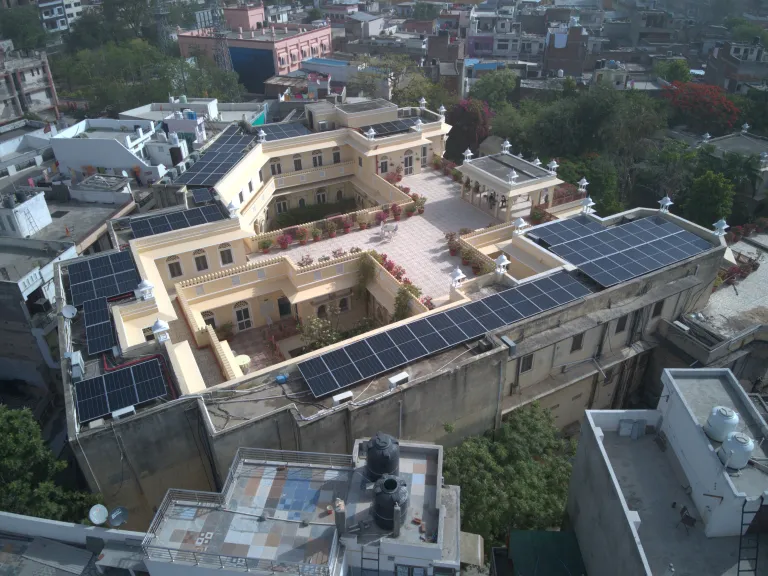How to calculate performance ratio of solar power plant
How to Calculate the Performance Ratio (PR) of a Solar Power Plant The Performance Ratio (PR) is a key metric

Efficient solar solutions to harness the sun’s energy.

Brighten your space with our energy-saving solar lights.

Secure your property with eco-friendly solar cameras.

Optimize your farm with innovative solar solutions.


Welcome to the Solar One-stop Sourcing platform, where we offer you the ultimate one-stop solution for solar engineering, procurement and construction (EPC) contractors. We focus on providing comprehensive resources, innovative tools and expert advice to the solar industry. Whether you want to simplify operations, enhance project management, or access high-quality materials and services, we do our best to provide you with everything you need.
We will provide you with top products, industry insights and customizable solutions to enable you to manage your projects more efficiently. From early project planning to execution, our goal is to support solar EPC contractors to maximize their potential, increase productivity and drive sustainable energy solutions.
Let’s work together to accelerate the transition to renewable energy while ensuring your business stays ahead of the curve in this rapidly evolving market. With our supply chain capabilities and expertise, we are committed to helping you navigate the complexities of solar projects with confidence and ease.
How to Calculate the Performance Ratio (PR) of a Solar Power Plant The Performance Ratio (PR) is a key metric
IEC 60364-7-712:2017: Low Voltage Electrical Installations — Particular Requirements for Solar Photovoltaic (PV) Power Supply 1. Scope Applicable to low
In many EPC contracts for photovoltaic plants, there is a requirement to perform thermographic inspections using drones only when the
How does the cost of installing a Agricultural solar power plant The Agricultural Photovoltaic Power Station (also known as Agrivoltaic
1. Photovoltaic Systems IEC 61730-2:2023 RLV Testing Requirements IEC 61730-2:2023 RLV is an updated version of IEC 61730-2:202. It is
Solar Photovoltaic Systems and Solar power station safety qualification Requirements for testing IEC 61730-2:2023 is a standard published by the
Choosing the right battery energy storage solution is essential for optimizing performance and meeting energy demands. In this article, we
Can Flow Batteries Finally Beat Lithium? A Complete Guide 1. Introduction: The Energy Storage Battle The global push toward net-zero
Flow Battery Technology Guide (COMSOL Simulation and Flow Optimization Studies Based on Titanium-Manganese and All-Vanadium Systems) 1. Flow Battery Definition
To extend the service life of solar power sources, particularly focusing on the battery component, several strategies can be employed:
How to Calculate Battery Storage Capacity for Solar Systems Calculating the battery storage capacity of a solar system is a
Understanding Battery Energy Storage Systems (BESS) Battery Energy Storage Systems (BESS) are essential components in modern energy management, facilitating the
The wind resistance design of solar street lights is one of the key factors ensuring their stable operation under adverse
Is My Solar Light Waterproof? Overall Waterproof Performance Solar lights are generally designed with a certain level of waterproofing, especially
Common Issues and Solutions for Solar Street Lights and Landscape Lights After Rain Solar street lights and landscape lights commonly
Solar light tower with CCTV Security camera for Construction Sites In today’s fast-paced construction environment, security and efficiency are paramount.
Solar LED Street Lights vs Ordinary Street Lights Installation and Construction Installation Complexity Ordinary street lights have a complex installation
Reduce carbon footprint with commercial solar street lights Commercial solar street lights have significant advantages in reducing carbon footprints, which
Building D, Huashengtai Technology, Baoan District, Shenzhen, China
© 2025 All Rights Reserved.